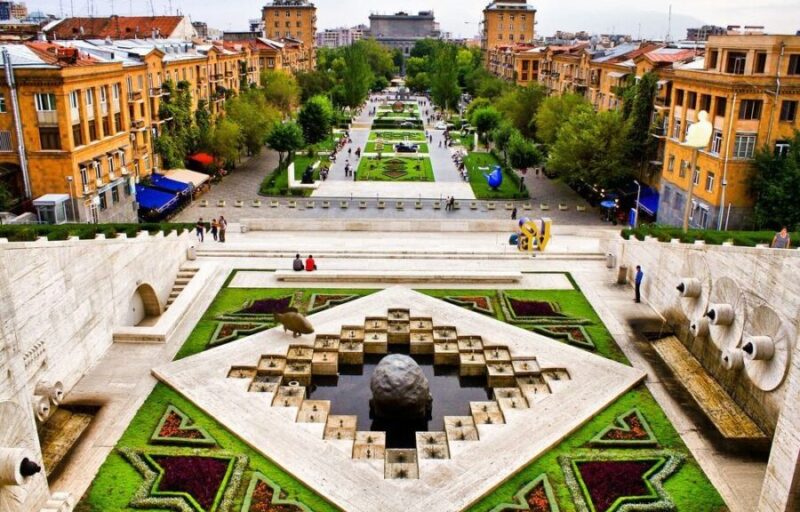
Armenia is known as a country of mountains, but it can also be designated as a country of stones. In Armenia, nature itself creates beautiful structures like the Symphony of Stones. However, Armenian architecture also stands out by the forms and materials that were used by architects.
The stone that prevails is tuff. You can see it in the pink buildings of the capital city Yerevan, the sculptures, and ornaments of cross-stones, and of course in the churches and monasteries.
Armenia’s architecture has been transforming throughout the centuries. The good thing is here you can be an eyewitness of Armenian history. The tourists have a chance to admire the huge walls of the Erebuni Fortress and the beautiful walls of the medieval monasteries that stand still despite wars, invasions, and earthquakes. Finally, when strolling in Yerevan or Gyumri there are great pieces from the 19th century and the architecture of Armenia’s Soviet Era.
Let’s explore the architectural styles and designs that Armenia can offer.
Churches and Monasteries
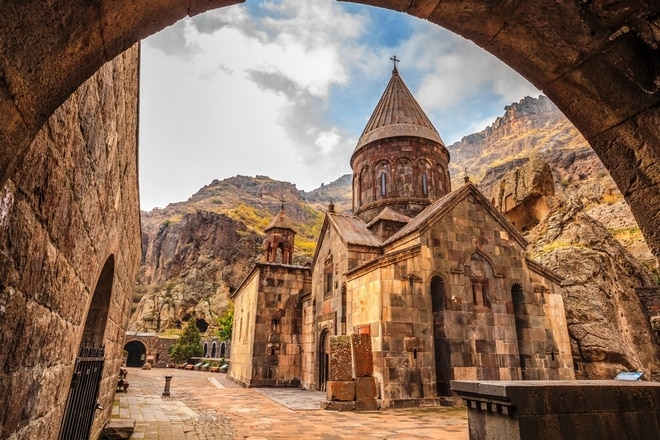
Pre-Christian architecture can be found in Urartian design at Erebuni Fortress and the Hellenistic-style Temple of Garni. Meanwhile, the earliest Christian churches, constructed between the 4th and 7th centuries, evolved from simple basilicas to iconic cupola cones, laying the foundation for the diverse and rich architectural legacy of Armenia.
Stone available in the mountainous terrain became the main construction material. In addition, many churches and monasteries are built to blend with the surrounding terrain. One of the best examples is the rock-cut construction of the Geghard Monastery.
One can find typical Armenian structures of khachkars (cross-stones) scattered throughout the country. These monuments feature a large cruciform in the middle, carvings of saints and animals as well as other geometric motifs. The tradition of Khachkar carving persists and there are modern-era kahchakrs that are installed next to the Armenian churches in other countries.
The Armenian churches have distinctive conical roofs that have functional and symbolic meaning. This helps to shed off the snow and also serves as a beacon across the rugged terrain making churches visible for miles. As for internal design, the Armenian churches are simple and lack too much color and ornaments. Of course, there are exceptions like Geghard Monastery which stands outside with its carved interiors. In many Armenian churches, one can see the light pouring inside from the oculus symbolizing the light from the heaven that comes to brighten the church.
Soviet Era Architecture
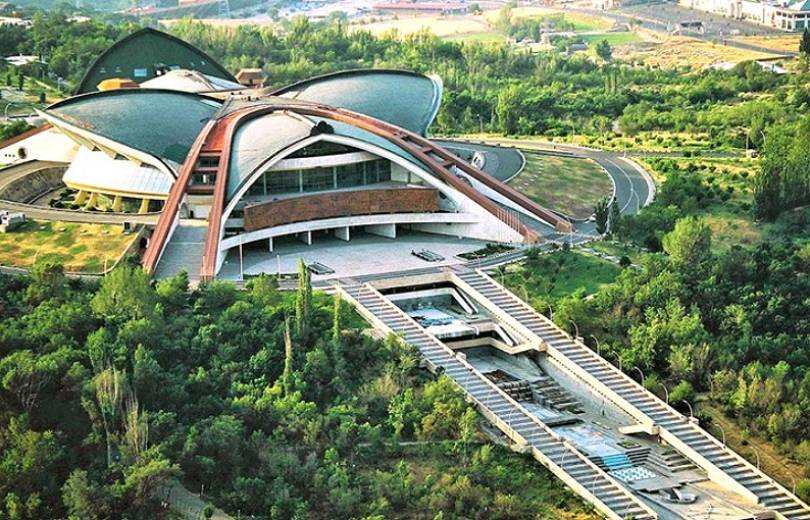
A number of architectural gems were constructed in Armenia during the Soviet Era from 1920 through 1991. Amidst the picturesque landscapes, the country boasts Soviet architectural wonders scattered across its cities and rural areas.
If you stroll in Yerevan, you will see unique constructions like the Yeritasardakan metro station. It is a bold exemplar of contemporary design with its minimalist aesthetic and innovative architecture.
Another masterpiece is the Karen Demirchyan Sport and Complex Center. It’s a modern building that looks like a big bird with its wings wide open when looking from above. One-of-a-kind, it was opened in 1985 but is still surprising tourists with its unusual architectural solutions.
Another Soviet-era building of an old terminal of the Zvartnots airport is a vivid example of Soviet Modernism. The circular terminal and a tower that housed dispatched service look fantastic. However, in 2011 the terminal was closed after a new one was put into operation.
Outside Yerevan, you can find the Writers’ Resort, an old futuristic building that used to be a rest house. An avant-garde Soviet building that overlooks Lake Sevan has been included in various architectural must-see guides and covered by international media.
In general, one can discover modernist Soviet architecture even in Armenia’s rural areas. A number of bus stations of unusual forms or metal statues can be seen in places where one might least expect to encounter them.
Modern Armenian Architecture
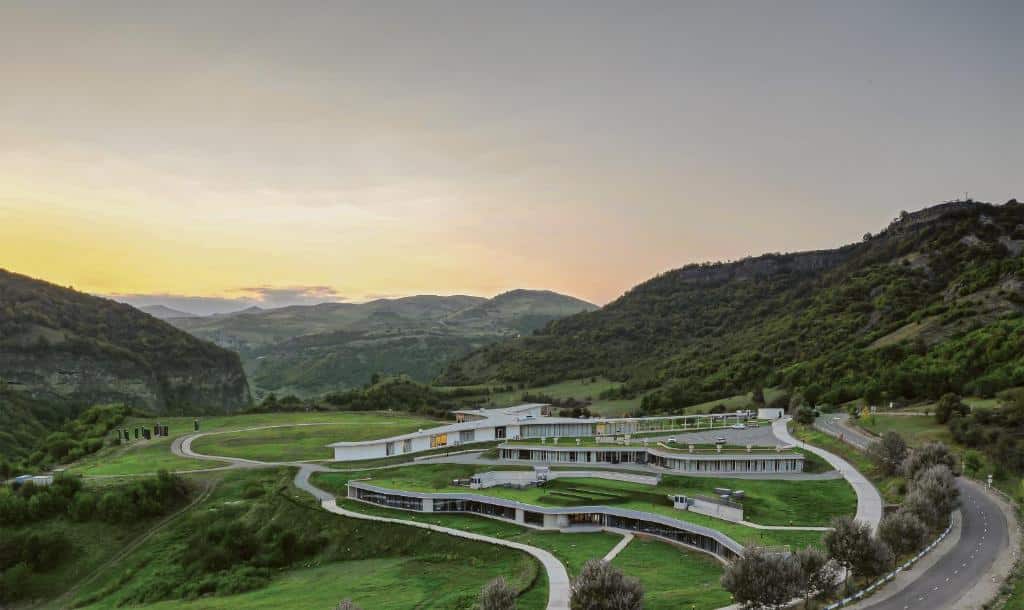
Modern architecture embraces current design trends and also has some distinctive national characteristics.
In particular, there are some great examples of modern design represented in the buildings of educational facilities. Thus, the UWC Dilijan International School campus in Dilijan, the TUMO center in Yerevan, and the COAF SMART center in Lori province show how one can seamlessly integrate modern solutions in natural surroundings. COAF center is a concrete building with an undulating shape. The single-story building repeats the shape of a hilly landscape forming a unity with the stunning nature of the Lori province.
In Yerevan, tourists can also encounter a harmonious blend of modern styles in both residential and commercial buildings. We cannot but mention the Cascade complex — the favorite spot of tourists and local residents which is also an iconic piece of modern architecture. It was built in the 1970s to connect two districts of the city. However, in the 2000s the construction was also turned into a museum housing a collection of American-Armenian collector Gerard Cafesjian. The art pieces can be seen both inside and outside on the staircase where one can enjoy the view of Yerevan and Mount Ararat.
Book A Trip to Armenia
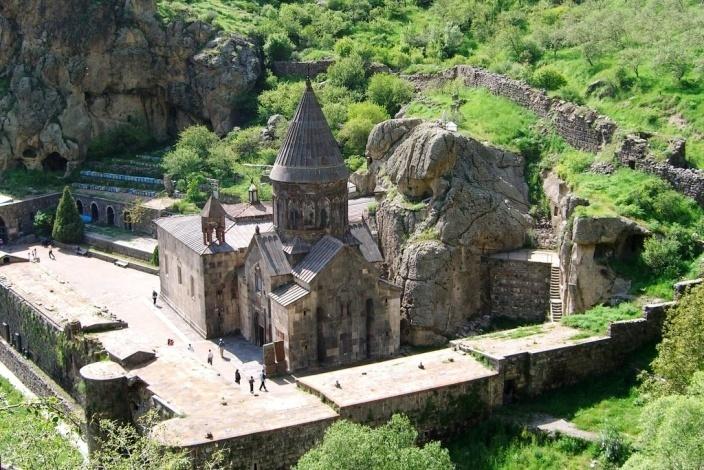
Armenia’s architecture has been evolving over time. Here you can find all: churches dating back to the 7th century and modern concrete buildings nestled in the mountains. If you are tired of traditional routes and itineraries, Levon Travel agency can offer its 30-year expertise and experience in crafting custom tours.
Levon Travel’s tours provide insights into the details of Armenian architecture and unveiling stories told in stone. Witness the pieces of Armenian architecture with your own eyes by choosing the best routes suggested by our staff. In addition to providing the best tour guides in Armenia, the agency is planning the holiday from scratch. We book tickets and accommodation and provide transportation or car rentals if needed.
